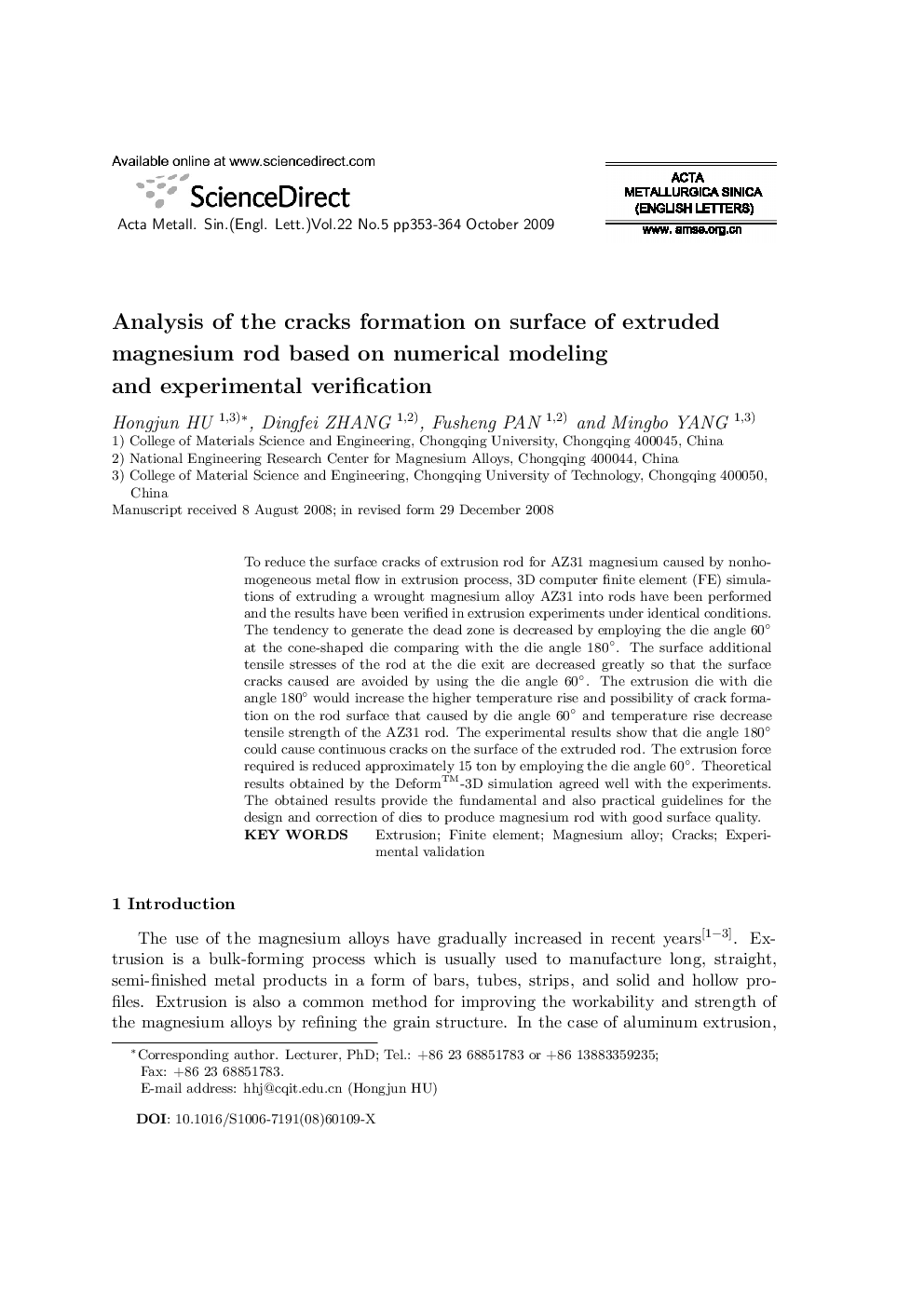| Article ID | Journal | Published Year | Pages | File Type |
|---|---|---|---|---|
| 1599216 | Acta Metallurgica Sinica (English Letters) | 2009 | 12 Pages |
Abstract
To reduce the surface cracks of extrusion rod for AZ31 magnesium caused by nonhomogeneous metal flow in extrusion process, 3D computer finite element (FE) simulations of extruding a wrought magnesium alloy AZ31 into rods have been performed and the results have been verified in extrusion experiments under identical conditions. The tendency to generate the dead zone is decreased by employing the die angle 60° at the cone-shaped die comparing with the die angle 180°. The surface additional tensile stresses of the rod at the die exit are decreased greatly so that the surface cracks caused are avoided by using the die angle 60°. The extrusion die with die angle 180° would increase the higher temperature rise and possibility of crack formation on the rod surface that caused by die angle 60° and temperature rise decrease tensile strength of the AZ31 rod. The experimental results show that die angle 180° could cause continuous cracks on the surface of the extruded rod. The extrusion force required is reduced approximately 15 ton by employing the die angle 60°. Theoretical results obtained by the Deformâ¢-3D simulation agreed well with the experiments. The obtained results provide the fundamental and also practical guidelines for the design and correction of dies to produce magnesium rod with good surface quality.
Related Topics
Physical Sciences and Engineering
Materials Science
Metals and Alloys
Authors
Hongjun HU, Dingfei ZHANG, Fusheng PAN, Mingbo YANG,
